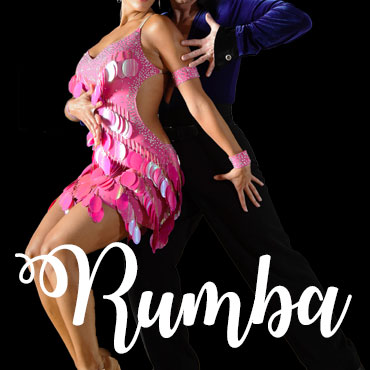The Rumba
The Rumba has both Spanish and African roots. The native Rumba was around as early as the 16th century when imported slaves spread the dance to the Caribbean Islands. It was most popular in Cuba, where dances like the “Son” and the “Danzon” were created as slower, more subtle Rumba versions. The American Rumba is based on the “Son,” and it was introduced to the United States in the early part of the 20th century.
When to Dance the Rumba
The Rumba is essentially danced in a box pattern. It can be performed in a closed position or open-facing, with a one or two-hand hold. Since it requires a good amount of space, it is best for weddings and other events that have large dance floors.
Interesting Facts
- The native Rumba was derived from religious and ceremonial dances in Africa.
- The word “Rumba” comes from the verb, “rumbear,” which means to dance and have a party.
- Other versions of the Rumba include the Guagira, Guaracha, and Naningo.


